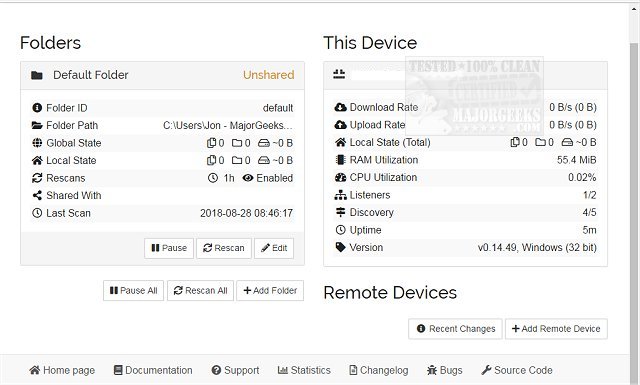Syncthing has recently released version 1.29.7, further enhancing its functionality as a decentralized, open-source alternative to proprietary sync and cloud services. The software is designed to provide users with a safe and secure way to synchronize files across multiple computers with minimal user interaction.
A standout feature of Syncthing is its browser-based graphical user interface (GUI), which allows for easy configuration and monitoring of file-sharing activities. Users retain full control over the storage, sharing, and transmission of their data, ensuring privacy and security. Unlike many other file-sharing applications, Syncthing does not rely on third-party servers or store user data externally, thereby eliminating potential vulnerabilities associated with centralized storage.
Data transmission is safeguarded through TLS encryption, and each device, or node, in the Syncthing network is authenticated using a robust cryptographic certificate. This means that only those nodes explicitly permitted by the user can connect to their file-sharing cluster, providing an additional layer of security.
As users increasingly seek alternatives to traditional cloud services, Syncthing's emphasis on privacy and decentralization positions it as a compelling choice. Future developments may include enhancements to its user interface, increased compatibility with various operating systems, and additional features that improve synchronization efficiency and reliability.
In summary, Syncthing 1.29.7 builds on its reputation as a secure and user-friendly file synchronization tool, while continually adapting to meet the needs of privacy-conscious users
A standout feature of Syncthing is its browser-based graphical user interface (GUI), which allows for easy configuration and monitoring of file-sharing activities. Users retain full control over the storage, sharing, and transmission of their data, ensuring privacy and security. Unlike many other file-sharing applications, Syncthing does not rely on third-party servers or store user data externally, thereby eliminating potential vulnerabilities associated with centralized storage.
Data transmission is safeguarded through TLS encryption, and each device, or node, in the Syncthing network is authenticated using a robust cryptographic certificate. This means that only those nodes explicitly permitted by the user can connect to their file-sharing cluster, providing an additional layer of security.
As users increasingly seek alternatives to traditional cloud services, Syncthing's emphasis on privacy and decentralization positions it as a compelling choice. Future developments may include enhancements to its user interface, increased compatibility with various operating systems, and additional features that improve synchronization efficiency and reliability.
In summary, Syncthing 1.29.7 builds on its reputation as a secure and user-friendly file synchronization tool, while continually adapting to meet the needs of privacy-conscious users
Syncthing 1.29.7 released
Syncthing is a portable Open Source replacement from proprietary sync and cloud services designed to be safe, secure, and decentralized.


